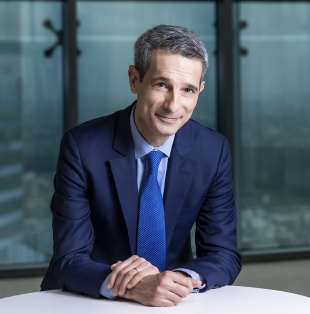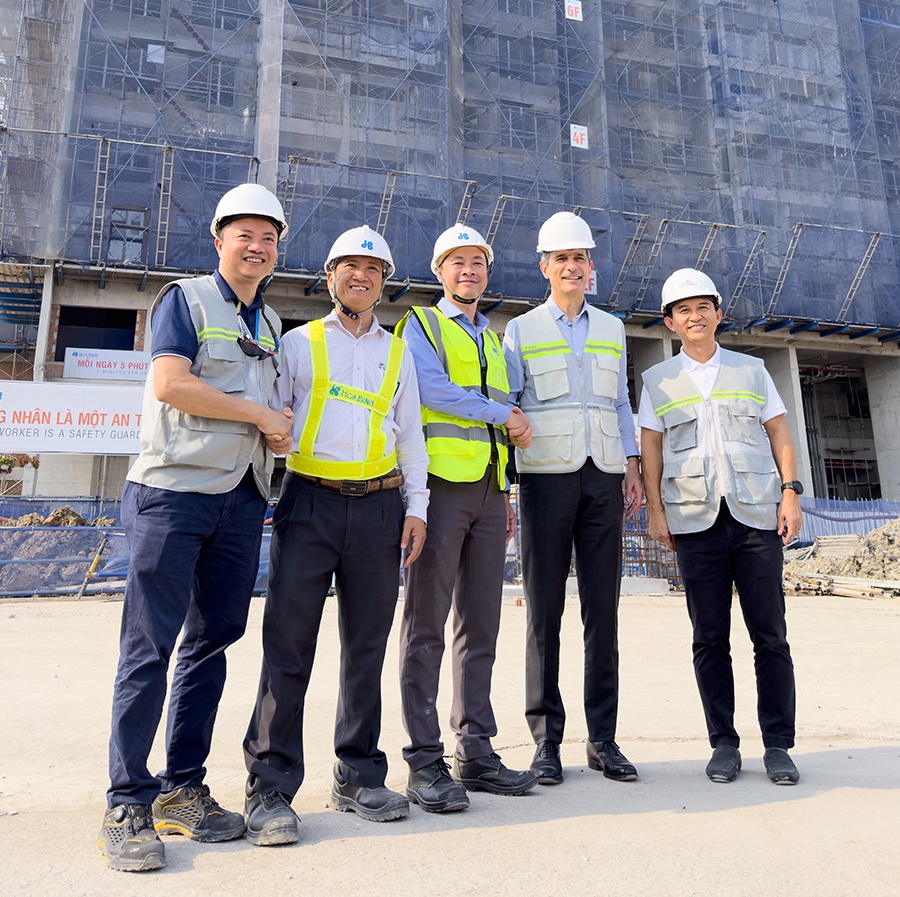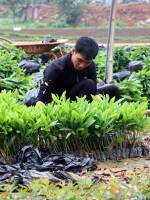What challenges do you see in Vietnam’s construction market? And how can Saint-Gobain Group help solve them?

We have identified three main challenges. The first is CO2 emissions, with the construction industry contributing roughly 40 per cent. In Vietnam, traditional construction relies heavily on sand, cement, and bricks. Replacing traditional materials like cement with lighter ones, such as gypsum, can greatly reduce weight and emissions.
Second is the preservation of natural resources. Construction takes half of the world’s natural resources by volume. Vietnam is facing a scarcity of resources like sand, but if the industry here moves to a specialised crack-resistant plastering solution or plasterboard, it will eliminate much of the demand for sand.
The third challenge we are facing is rapid population growth, which is driving demand for new buildings. Saint-Gobain has long chosen sustainable development as a core business strategy, and we offer a comprehensive range of light and sustainable building materials to meet this growing demand. As a result, buildings that use a range of Saint-Gobain products can help reduce CO2 emissions and create more comfortable, user-friendly living spaces.
How can Vietnam ensure sustainable development in the construction industry?
You need innovation in the circular economy to recycle and reuse materials and move away from carbon-based materials. From 2017 to 2023, Saint-Gobain Vietnam reduced the amount of carbon in its products by 60 per cent.
Regulations are also necessary. For instance, from next year, new buildings must have energy-efficient air conditioning. Saint-Gobain can be a key player in driving this positive shift. As a major global provider of lightweight and sustainable building materials, we can scale up solutions effectively. Our active participation in the World Green Building Council and Vietnam Green Building Council positions us to promote initiatives like material recycling and emissions reduction here, just as we have done in other markets.
We also need to see better communication to educate people about green solutions, green materials, and green buildings, so that they may gain a better understanding of natural resource management.

What are Saint-Gobain’s priorities for its 2024 Vietnam strategy?
Vietnam is one of our fastest-growing markets and fits very well into our overall strategy, and last year, Saint-Gobain Vietnam received an award in recognition of the outstanding growth it has seen.
Our company brings value to the local market and communities through our products and solutions, and we are helping Vietnam go green in line with its commitments, such as net-zero by 2050.
However, one of the greatest obstacles in achieving this target of carbon-neutrality by 2050 for any country is the construction industry, largely due to the high rate of emissions. Saint-Gobain is committed to our processes and to our research and development, on which we spend roughly $600 million every year, into lighter and more environmentally friendly materials.
We are dedicated to sustainable investment in Vietnam, where we have a great team with strong connections to our customers. So far, we have nine plants here with more than 1,000 employees and a profound understanding of the market due to our more than 2,000 tier-2 retailers with more than 10,000 installers skilled in using a wide range of Saint-Gobain’s lightweight products. So we want to continue to enrich our understanding and involvement in this market.
Bich Thuy




